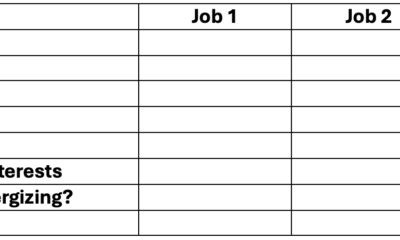Professional Development
6 Steps To Achieving a Successful Business Strategy Execution

Unlocking Successful Strategy Execution: A Comprehensive 6-Step Framework
Strategic planning may be challenging, but the true test lies in execution. Bridging the gap between strategy and action can seem daunting, with many well-crafted plans failing to see the light of day. In fact, statistics reveal that a significant number of strategies, even today, do not materialize into results.
The Chasm Between Strategy Formulation and Execution
Leaders often invest substantial time and effort in formulating strategies for their organizations. However, the harsh reality is that without effective execution, these strategies hold little value. Research indicates that a large percentage of well-thought-out strategies fail due to poor implementation. Successful strategy execution demands a systematic translation of vision into actionable processes and measurable outcomes.
To bridge this gap, leaders must prioritize execution as much as strategy formulation. Without a robust framework to connect vision and action, strategies are bound to fall short of expectations.
Common Reasons for Strategy Execution Failure
Understanding why strategies fail is crucial for creating execution-ready strategic plans. Lack of ownership, poor communication, inability to adapt, lack of employee engagement, inadequate progress tracking, and ignoring middle management are common pitfalls that hinder successful execution. A structured approach with strong leadership oversight is essential to navigate these challenges.
6 Steps To Successful Strategy Execution
These six steps form the core elements for successful strategy development and implementation:
- Strategic Planning: Crafting a solid strategic plan that outlines the organization’s vision, goals, priorities, resource allocation, and risk assessment.
- Communication & Collaboration: Cascading the strategy across all levels, fostering cross-functional collaboration, and generating buy-in.
- Alignment & Accountability: Linking top-level strategy to ground-level operations, setting aligned goals, and fostering personal accountability.
- Action Planning: Developing detailed execution plans that map priorities to specific activities, owners, and timeframes.
- Continuous Monitoring: Regularly reviewing progress, adapting to changes, and making course corrections as needed.
- Regular Reviews & Replanning: Periodically reviewing and reflecting on strategic initiatives to realign execution efforts.
Best Practices for Strategic Planning
Effective strategic planning involves the following best practices:
- Conduct a SWOT Analysis: Assess internal and external factors to gain insights into the organization’s strategic position.
- Define Specific, Measurable Goals: Set SMART goals that are clear, measurable, attainable, relevant, and time-bound.
- Prioritize Ruthlessly: Focus on vital priorities with high impact rather than spreading resources thin.
- Pressure Test Assumptions: Vet assumptions rigorously to identify flaws in thinking and course correct early on.
- Align All Plans: Ensure alignment across all levels of the organization to facilitate cohesive strategy execution.
Conclusion
Successful organizations excel not just in formulating strategies but in executing them flawlessly. By adopting a structured yet agile approach to strategy execution, companies can achieve significant growth, profitability, and competitive advantage.
-

 Professional Development1 month ago
Professional Development1 month agoDrawing up your strategy
-

 Personal Growth2 months ago
Personal Growth2 months agoSucceeding as a ‘parentpreneur’: Top tips
-

 Videos2 months ago
Videos2 months agoGreat Leaders INSPIRE Others To Do Great Things
-

 Productivity1 month ago
Productivity1 month agoHow to Increase Remote Work Productivity
-

 Productivity2 months ago
Productivity2 months agoTips for Boosting Work Productivity
-

 Productivity2 months ago
Productivity2 months ago5 Ways to Increase Your Personal Assistant’s Productivity
-

 Leadership1 month ago
Leadership1 month agoHow to Tackle Big Challenges
-
Leadership1 month ago
Cutting Through the Clutter of Internal Communications




























